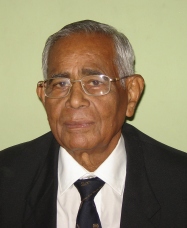Countries Even Rich in Fossil Fuels Opt for Solar Energy

By P.K Jena
The human society on this planet is facing acute shortage of energy in order to meet its increasing demand in various sectors. At present, nearly 80% of energy required is met from fossil fuels. In view of fast depletion of these and their significant adverse effect on environment due to release of large amounts of green house gases, it has been essential to harness energy from renewable sources. In this regard, the unlimited solar energy backed by efficient technology to harness it can come to our rescue.
Human beings since the very beginning on this earth have been using solar energy for drying food grains, clothes etc. With the development of science and technology, increasing amounts of solar energy is being used to heat water for producing steam for generating electricity and more recently the photo voltic (PV) technology where the radiant energy of the sun is converted to electrical energy when sun light falls on a semi conductor material like silicon.
It is reported that, solar energy on most part of the earth is abundant. For example, in China, even only 1% of its waste land (26,300 km2) in its northern and western regions, can generate electricity equivalent to 1300 GW from solar energy which is about double the energy requirement of China projected for year 2020. Similarly, in South Eastern part of USA, use of Concentrated Solar Power (CSP) where solar heat is used to produce steam for generating electricity technology in an area of 23418 km2, can generate electricity equivalent to 1067 GW.
In the World’s Energy Vision 2100, developed by German Advisory Council on Global change, it is expressed that, solar Photo Voltic (PV) can contribute about 20% of world’s energy by 2050 and over 60% in 2100 due to fast developing technology to harness it. The world photovoltaic market has grown by more than 60% in 2007. The cumulative global capacity of PV system is expected to reach 1600 – 2000 GW by 2030. At present, the typical efficiency of flat plate crystal silicon solar modules is around 59%.
In view of the technology developed in recent years, it is felt that, harnessing solar energy in large scale is possible if PV generation cost can be reduced considerably. The cost reduction can be achieved through some important measures like i) Higher conversion efficiency (ii) Less material consumption (iii) Application of cheaper materials, (iv) Innovation in manufacture and mass production and (v) Optimized system technology.
At present, the major PV cell producers are USA, Germany, Japan, China and Taiwan. However, some developing countries are also gearing up their R & D effort in this direction. Even countries rich in fossil fuels like Saudi Arabia and Nigeria are engaged in setting up projects for harnessing solar energy, may be to save fossil fuels for purposes like production of metals and chemicals.
1.Since, the mid 1970s, Saudi Arabia has been in forefront in R & D area on solar energy. An ambitious research programme has been undertaken by the country in cooperation with USA and Germany. It is pertinent to mention here that, Saudi Arabia even with 1/4th of world’s oil reserves and ranking 5th in the world natural gas reserves, has undertaken massive programmes in utilizing solar energy particularly to cut down the green house gases generated through use of fossil fuels in the country. Some of the important projects of the Energy Research Institute of this country in the area of harnessing solar energy are:
- Solar village project.
- Solar thermal dish project.
- Solar hydrogen production project.
- Solar power water desalination project.
- Solar power hydrogen utilization project.
- Solar power highway devices project.
- Solar water heating project.
- Photovoltaic research projects.
- Solar energy research project.
It may be worthwhile to elaborate the first three major projects.
a) The objective of solar Village Project is to use solar energy to provide power to remote villages in Saudi Arabia that are not served by electric power grid. It is reported that, the entire PV project occupies an area of about 67000 square meter with 350 kw power station. This project includes 160 PV systems covering an area of 4000 square meter with a total direct current peak output of 350 kw with 1100 kwh lead acid battery storage, 300 kv invertors and a solar powered weather data monitoring station.
- The solar thermal dish project has started as back as 1982. The project has aimed at producing 50 kw of electric power from each thermal dish. It involves the technology development, construction and testing of two large scale membrane solar concentrators each 7m in diameter with a large hollow reflector. The units are coupled with systems to convert the solar thermal energy into electrical energy that drives 50 – 60 kw peak (AC) electrical generator.
- The 350 kw solar hydrogen production project is a very important one. The purpose of the project is to utilize solar energy to decompose water into hydrogen and oxygen through PV system. A solar hydrogen production unit situated at solar village, Rydah, is reported to be the world’s first 350 kw solar powered hydrogen generation plant. The electricity (DC) is used in advance alkaline water electrolyser (0.25 m2 of electrode area and 120 cells) to produce 463 cube meterof hydrogen per day at normal pressure. The hydrogen thus produced, can be utilized as fuel for domestic and industrial applications. Hydrogen can also be used in an internal combustion engine instead of petrol or gasoline with high efficiency.
2. Nigeria is another developing country which is also engaged in using solar energy in a big way in spite of the fact that the country is blessed with large quantities of fossil fuels including petroleum, natural gas, coal, lignite, tar sands etc. The country has taken some ambitious programmes for harnessing energy from renewable sources particularly the solar energy, as solar radiation is abundantly available there. Nigeria is situated in high solar radiation belt of the world. The country receives solar energy amounting to about 7 kwh / m2 per day in the far north and about 3.5 kwh / m2 per day in coastal latitudes. The estimated potential solar energy in Nigeria assuming 5% efficiency, is 5 X10 14 KJ of useful energy per year. This is equivalent to about 258.62 million tonnes of oil produced annually and 4.2 X 10 5 GWH of electricity production annually in the country.
In Nigeria, as majority of the people live in rural areas with no easy access to fossil fuel energy resources, they can conveniently use solar energy for various purposes. Some of the projects developed to use solar energy in Nigeria are summarized below:
- A number of developments have taken place in Nigeria for converting solar radiation into heat using solar energy collectors. The efficiency of solar collectors can be enhanced by using spectrally selective surfaces. The heat produced can be used in solar water heaters, solar cookers, solar dryers etc.
- A thermo siphon solar water heater has been developed at National Centre for Energy Development (NCED), University of Nigeria, Nsukka. It is reported that, in this system, hot water in temperature range of 700 – 800C can be obtained and supplied to hospitals, hotels and industries.
- Similarly, solar crop dryer using solar radiations, has been developed and is being used to dry various types of crops. At the National Centre for Energy Research and Development, a 2- tonnes capacity rice dryer has been developed.
In the area of solar photovoltaic system, a number of developments have also taken place in Nigeria. Most of these are being used for street lighting. Photovoltaic systems are also being used to produce electricity for supplying to rural communities which are not connected to country’s electricity grid. In addition to these, photovoltaic solar energy is being used for pumping water and also for using in refrigerators, televisions, etc. The photovoltaic system installed in 9 states of Nigeria. These are 108 in number with total capacity of 86.75 kwp. These are being used for pumping of water, for refrigeration, lighting of streets and supplying electricity to villages.
- In this country, some state governments in collaboration with non government organizations are sponsoring solar energy projects in some rural areas which are not connected to national grid. The energy commission of Nigeria which has been set up in 1979, at present has 6 centers across the country to conduct research and developmental programmes for application of renewable energy resources with particular emphasis on solar energy.
- In 2003, sixteen solar powered water projects have been completed in Nassarawa state of Nigeria. The Jigawa state government in partnership with a USA farm, has set up a Solar Electric Fund which has sponsored a number of solar energy projects including solar power systems , water pumping systems, electrification of health centres, schools etc. in different remote areas of the country.
During the years to come, it is necessary to give a major thrust through advanced R & D to lower the generation cost of solar energy so that, it can be comparatively cheaper than fossil fuel based options. Countries like India with large number of solar hotspots should make further efforts to increase the application of solar energy. Emphasis should be given on utilization of solar energy in rural and remote areas. The expansion of market for grid connected and distributed PV systems and solar hot water systems in recent decades have been remarkable. Further, development in technology to bring down the cost for harnessing solar energy as well as providing incentives should go a long way, for substantial replacement of fossil fuels to meet our energy requirements while keeping our environment clean.





